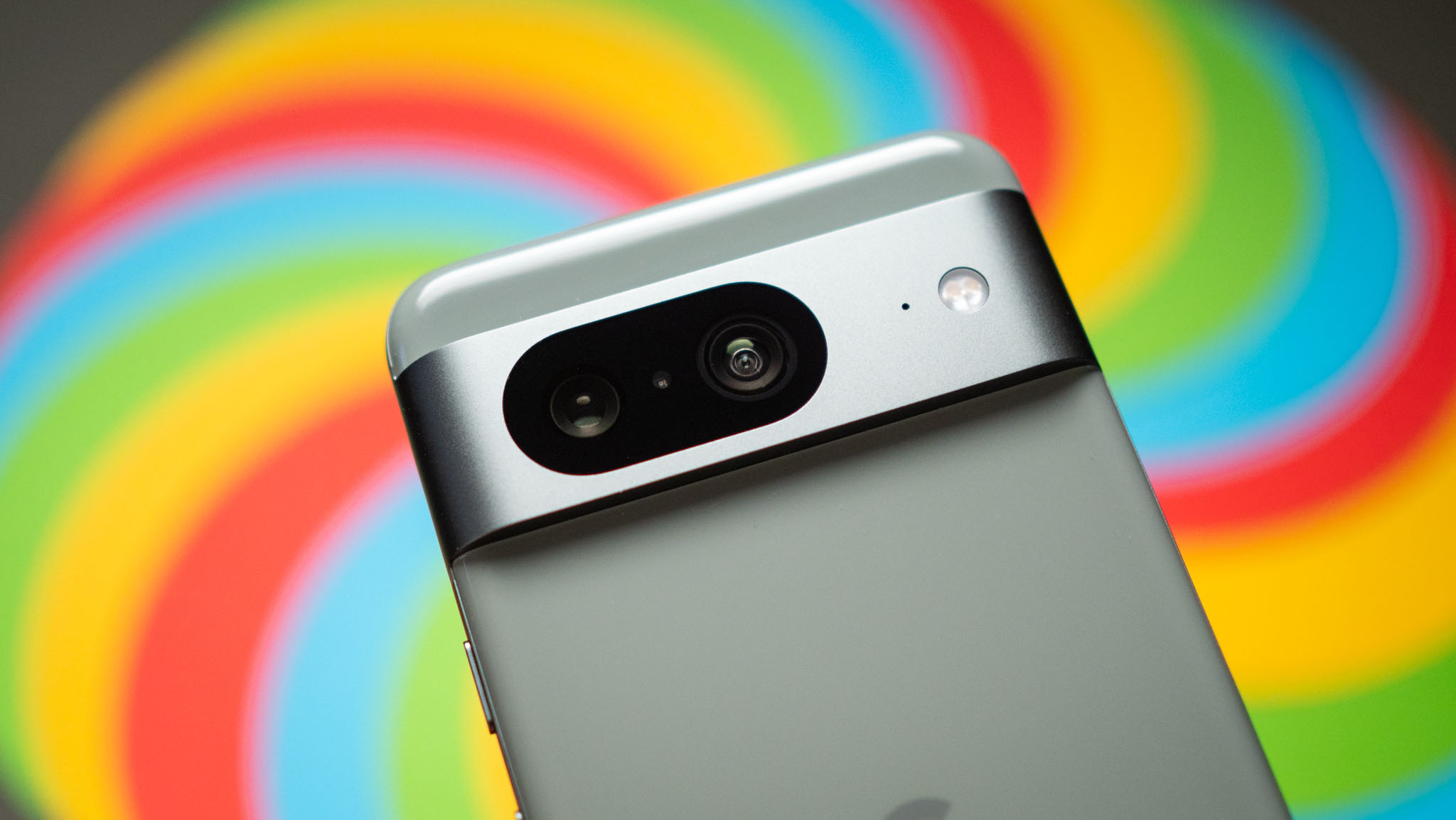
Upgraded across the board
Google hasn't been idle these past two years. The Pixel 8 gives you much better cameras, a more visible display, and another six OS upgrades. It isn't perfect, with some intentional downgrades to upsell you to the 8 Pro and some downsides compared to other recent Android flagships. But it certainly provides the polish that the Pixel 6 lacked.
For
- Better refresh rate, brightness, and color
- Lighter and easier to grip
- Newest camera tricks like Magic Editor & Photo Unblur
- Revamped camera sensors
- Faster Google Tensor performance and AI
Against
- Not as big of a performance gap as you'd expect
- More expensive
- No telephoto lens
Struggling to keep up
The Pixel 6 impressed us at launch, but the cracks began to show when people complained about its connectivity issues and a faulty fingerprint sensor. While its camera AI tricks were impressive at the time, it now looks outdated because the Pixel 7 and 8 have better AI tricks that it can't access. Its dim display makes it hard to read outdoors, too.
For
- Tensor G1 still in G3's league
- Larger display
- Respectable cameras with some AI tricks
- Solid battery life
Against
- Notorious connectivity/ fingerprint issues
- Dimmer display at only 90Hz
- Won't get newer camera/AI tricks
- Design isn't as polished
- Only one OS update left
How much of an upgrade is the Pixel 8 compared to the Pixel 6? Did Google make enough changes to justify a switch? This Pixel 8 vs. Pixel 6 guide will answer that question.
The Pixel 6 excited everyone when it launched thanks to its striking design, camera AI tricks, and Material You customization. In hindsight, though, Google cut corners on certain intangibles like the fingerprint sensor and connectivity that left Pixel 6 owners frustrated and ready for a change, well before its five-year support ran out.
Last November, the Pixel 8 arrived with the upgrades you'd expect to performance, cameras, and AI tricks, plus a shocking promise that it would receive support through the end of 2030. Still, with all the issues the Pixel 6 dealt with after launch, it's fair to wonder if the Pixel 8 will have similar issues after seven years (or fewer).
So, does the Pixel 8 bring enough to the table, or should you wait for the Pixel 9? The answer depends on how much you care about AI, but even so, it's a much more polished product in the ways that matter.
Pixel 8 vs. Pixel 6: Design and display

Both the Pixel 8 and Pixel 6 use a glossy glass back and a matte aluminum frame on the sides, meaning they're both prone to fingerprints without a case. You also get the trademark "G" logo and three similar color options — black, green, and light red/pink — though they're slightly different in names and styles.
The Pixel 6 introduced the trademark rear camera bar with a uniform glass strip covering the phone's width and exposing the camera sensors and LED in a line. Starting with the Pixel 7, Google switched to an aluminum camera bar with cutouts for the sensors that merge seamlessly into the phone's aluminum sides.
The Pixel 8 cutout is slightly wider than the Pixel 7's, which our reviewer called "striking." Compared to the Pixel 6, we much prefer the 8's design, both because aluminum is more durable for falls than glass and it gives the Pixel 8 a slightly more premium, metallic look.
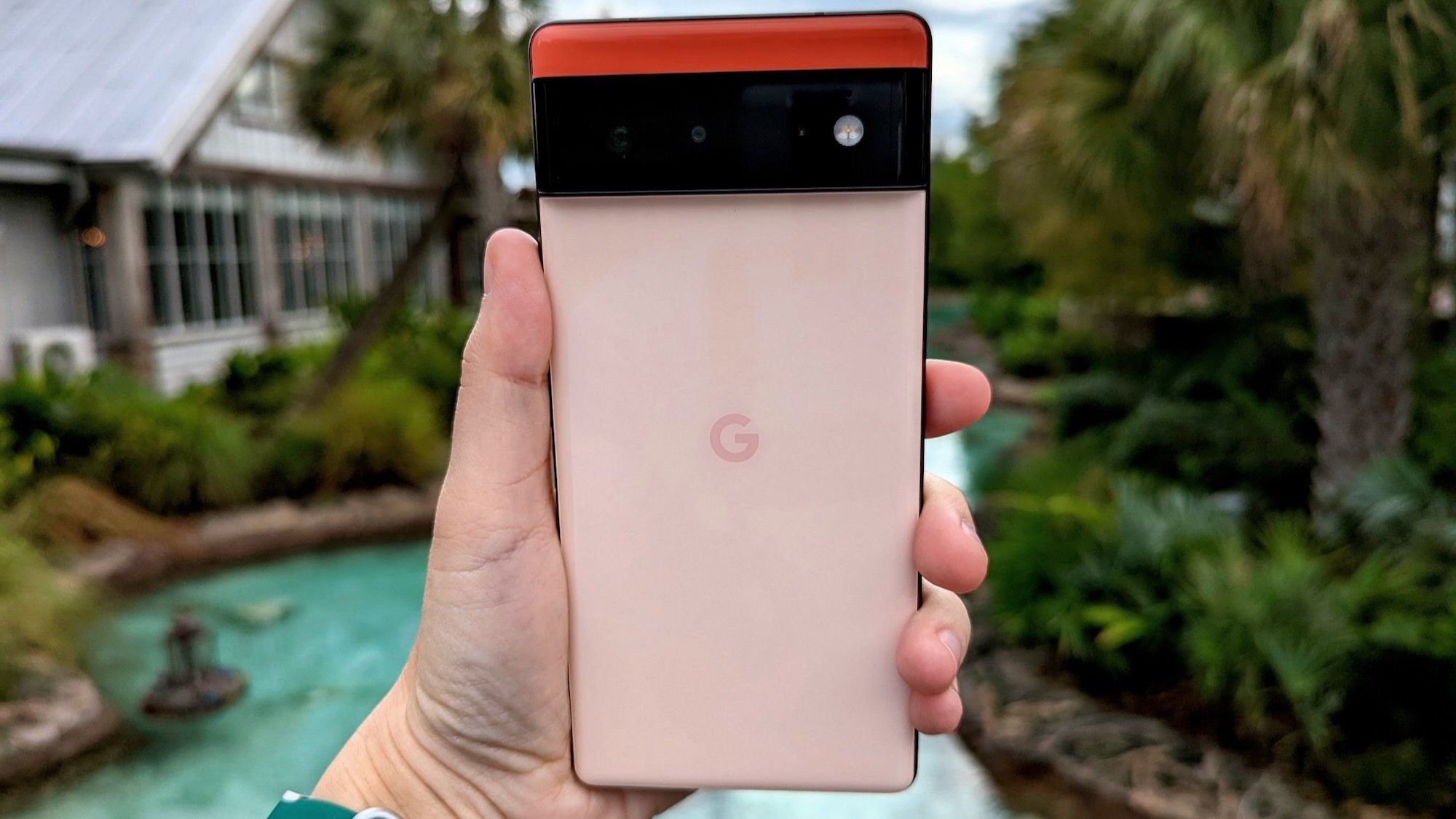
Both phones have an IP68 dust and water resistance rating, so you can trust either Pixel's durability to an extent without a case. While both phones have Gorilla Glass Victus protection for the display, the Pixel 6 used a slightly inferior Gorilla Glass 6 for the rear glass panel, while the Pixel 8 employs Victus there, too.
Built into each respective display is an optical fingerprint sensor. The Pixel 6's fingerprint sensor was notoriously unreliable for months after launch. Google did eventually patch in some fixes, but it's a continuing frustration for Pixel fans. Unfortunately, the Pixel 8 uses the same sensor technology, instead of the more reliable ultrasonic fingerprint system with the Galaxy S24.
One thing Google did change was to shrink the Pixel 8 display compared to the Pixel 6, making it more comfortable to use one-handed at the expense of extra display space. Both measure 8.9mm thick, but the Pixel 6's extra 4mm of width make a slight difference in how well you can grip it.
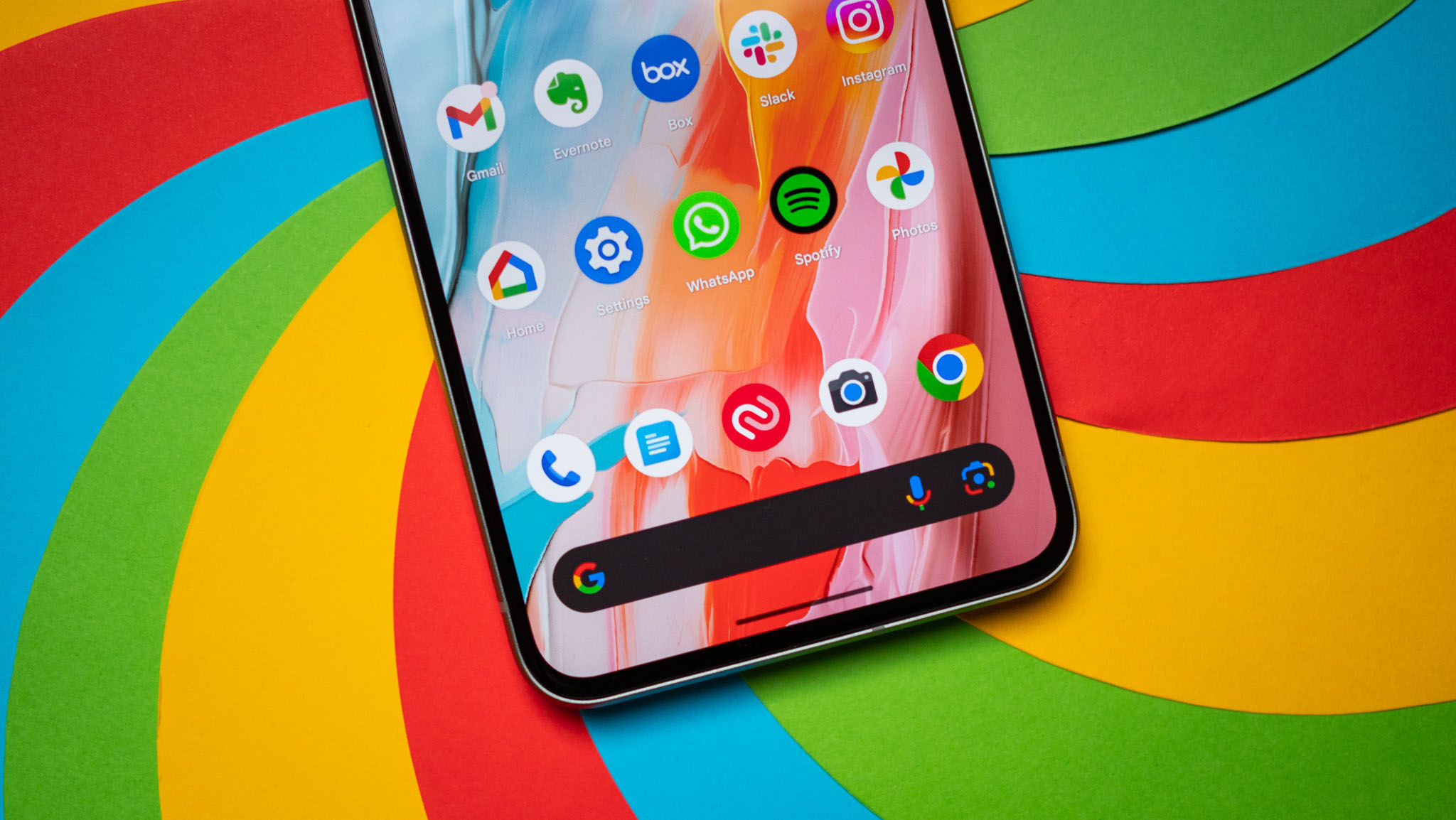
Both phones have the same FHD resolution, although the drop from 6.4 to 6.2 inches means that the Pixel 8 has a slightly higher pixels-per-inch ratio (428ppi vs. 411ppi). They both use flat displays, which we prefer to the curved displays of the Pro models for a firm grip. Of the two, the Pixel 8 has extremely narrow bezels, while the Pixel 6 has noticeable top and bottom bezels that you'd expect on a cheaper phone.
More importantly, the Pixel 8 hits a 120Hz refresh rate instead of 90Hz, a noticeable step up in smoothness over the Pixel 6 and 7.
It even hits up to 2,000 nits at peak brightness, compared to the Pixel 6's 800 nits. It dips to a respectable 1,400 nits for standard HDR, while the Pixel 6 only hits up to 500 with no HDR support. It's thanks to Google's new "Actua" display, meant to preserve color and contrast while at high brightness settings.
Only the Pixel 8 Pro has a "Super Actua" display, but the Pixel 8 does quite well for itself, with the same 1,000,000:1 contrast ratio and 16 million colors. Google doesn't list the Pixel 6's contrast ratio and color depth, so we can only assume it's lower. Generally speaking, it feels more like a mid-range or budget display, while the Pixel 8 matches the industry standard for high-end Android phones.
Pixel 8 vs. Pixel 6: Hardware, performance, and battery
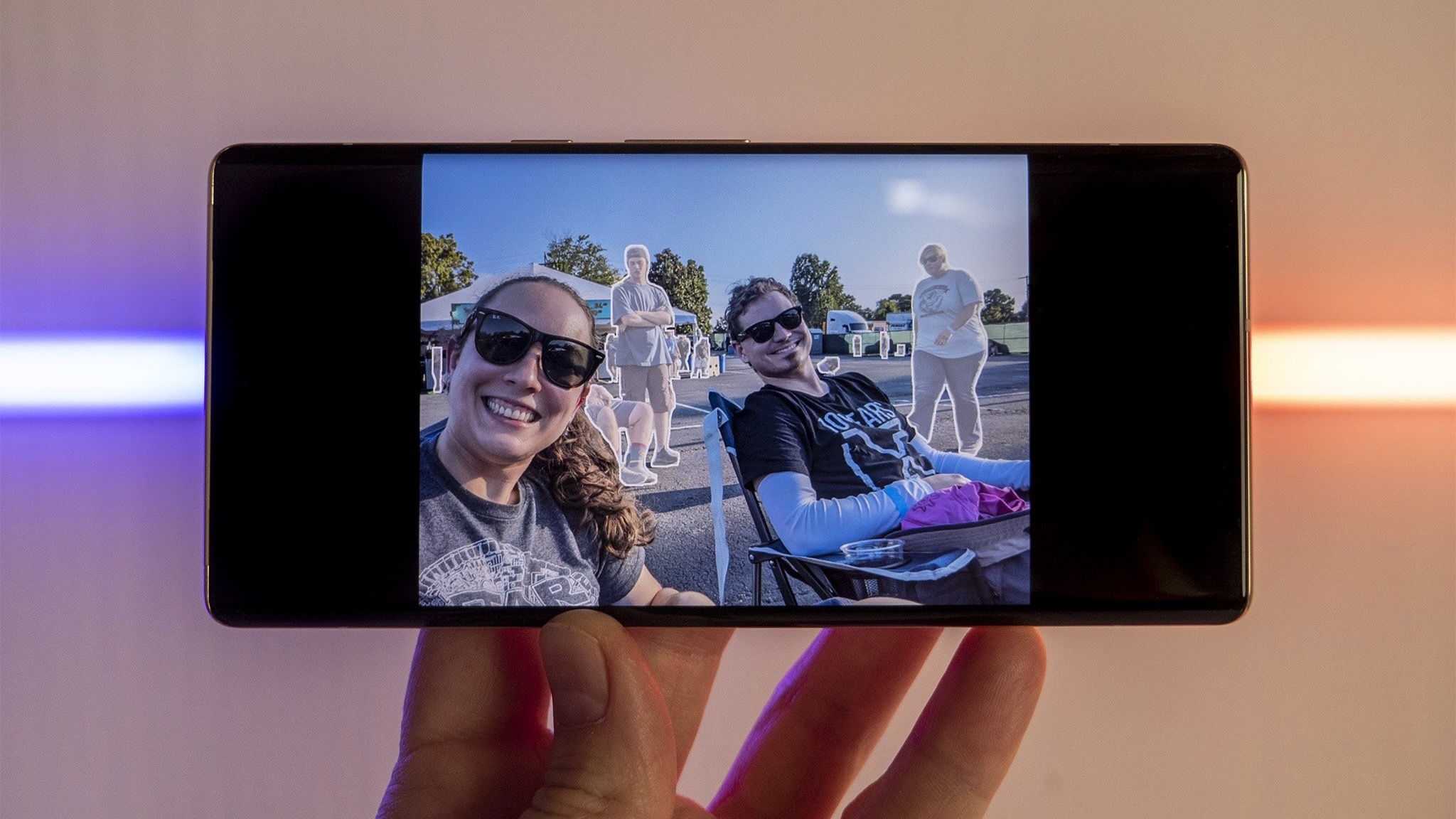
The Pixel 8, like the Pixel 6, uses the latest Tensor hardware with a Titan M2 security chip, 8GB of RAM, and up to 256GB of UFS 3.1 storage. The Pixel 8 does use LPDDR5X instead of LPDDR5, offering better performance and efficiency with the same memory; unfortunately, it doesn't have the faster read/write speeds of the Galaxy S24's UFS 4.0 storage, an upgrade we'd have liked to see.
Of course, if you compare the Pixel 8 vs. Pixel 6, you must ask how the Tensor G3 chip compares to the Tensor G1. Looking strictly at cores, the Tensor G3 has nine to the G1's 8, with one fewer flagship core but two extra mid-range productivity cores, and all clocked higher. You can see the specifics in the table below.
The fact is, the Tensor G3's greatest strength is in AI performance. Strictly looking at a standard Geekbench benchmark test by our parent company's Future Labs, the Pixel 6 averaged 1,158/2,862 in single- and multi-core performance, while the Pixel 8 averaged 1,029/2,696 for Geekbench 5 or 1,538/3,530 for Geekbench 6.
In plainer terms, the Pixel 8 is faster than the Pixel 6, but it doesn't have the performance gap you'd want to see after two years, and most of the best Android phones have much higher speeds backed by the Snapdragon 8 Gen 3, including the Galaxy S24.
Of course, the current rumor is that Google will stick with a Samsung-made Tensor G9 chip for the Pixel 9, so you shouldn't expect a major performance boost next year, either.
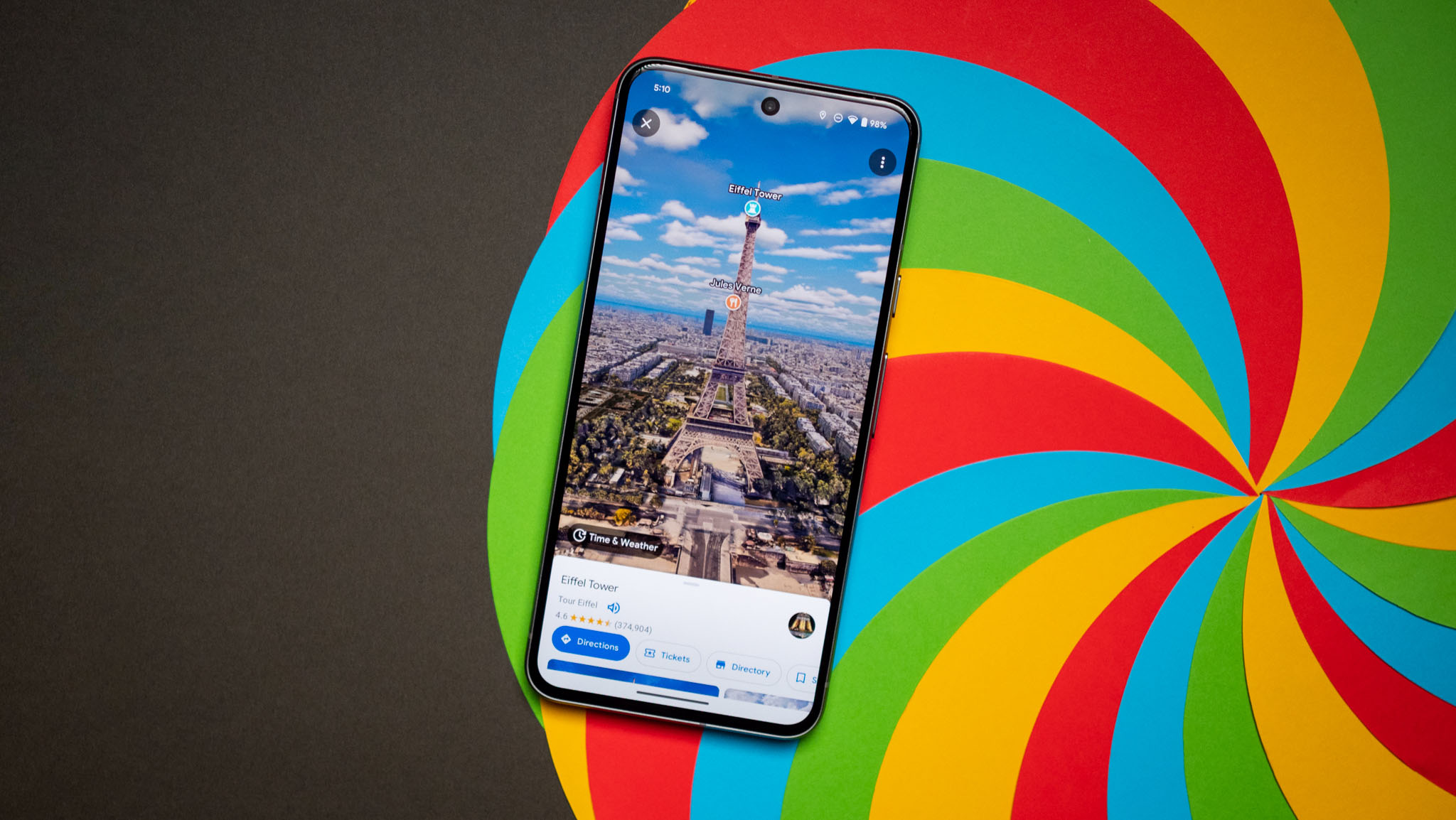
In practice, our Pixel 8 reviewer found that it tends to "throttle early, leading to noticeable jitter" while playing demanding Android games. It does perform very well for "on-device machine learning models" and camera processing that relies on AI, thanks to the revamped neural processing unit (NPU). But he isn't certain whether the Tensor G3 will "stand the test of time" long enough for the Pixel 8 to last for seven years, as Google's software support promises.
Our Pixel 6 reviewer was quite satisfied with the performance quality at the time, but it's fair to say that it has slowed down with age. It, too, offered a solid NPU with the Tensor G1, but only by 2021 standards. Now, it doesn't have as much AI leeway to compensate for its shortcomings as the Tensor G3 does.
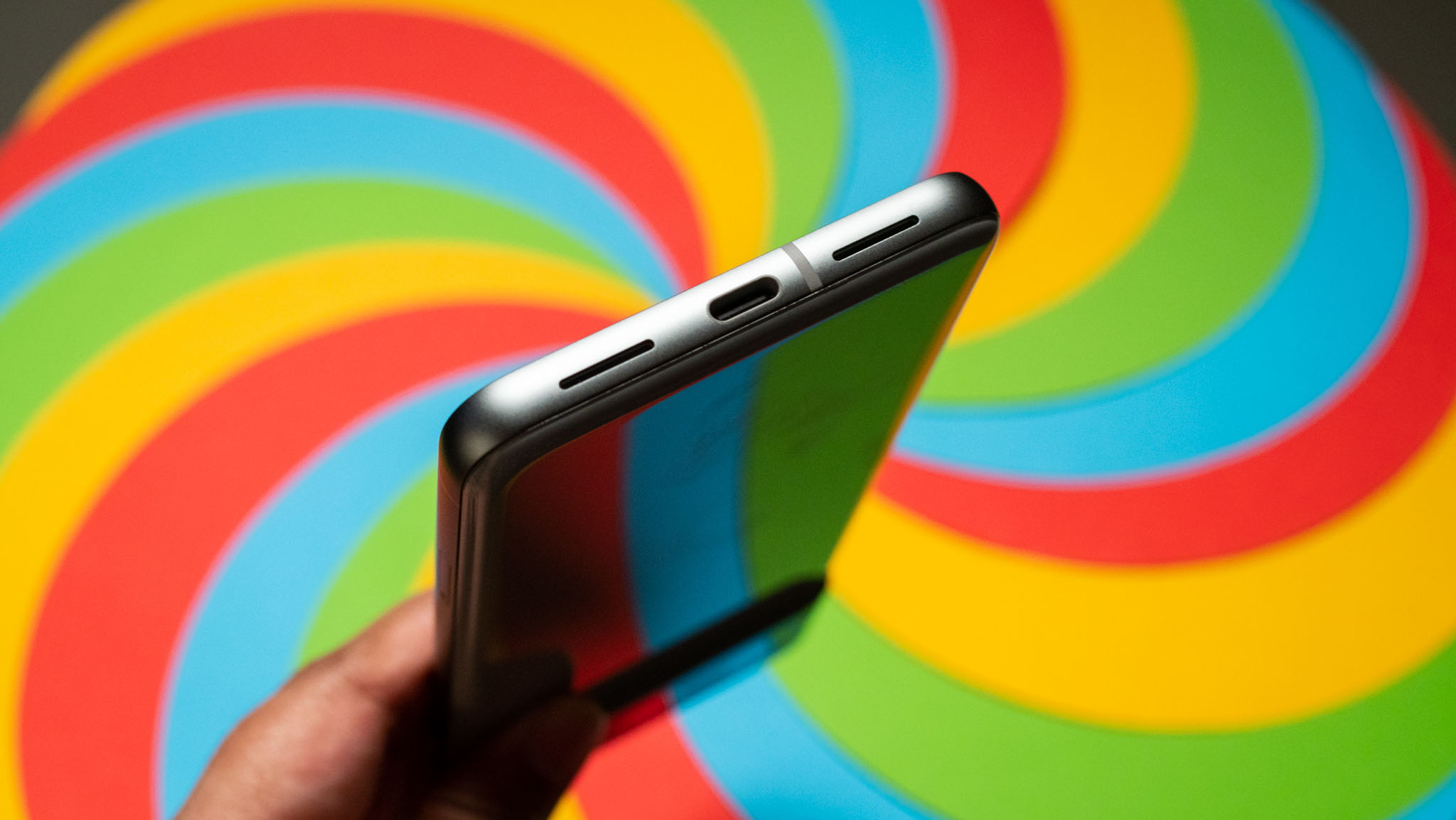
Moving on to battery life, the Pixel 6 has slightly more capacity, a shorter refresh rate, and lower nits of brightness, which helps it last longer than most phones. The Pixel 8's display improvements in those areas are offset by its slightly smaller display, which demands less power, and its more efficient Tensor chip. In other words, it's mostly a wash.
Our Pixel 6 reviewer found she could get 5.5 hours of screen time consistently with 25% battery remaining; our Pixel 8 reviewer similarly noted that it would "consistently deliver a day's worth of use, averaging just under six hours of screen time." Since most people don't actually use their phones actively that much per day, they certainly have the longevity most people need.
Once your battery is dead, the Pixel 8 will charge to 50% in 30 minutes and 100% in 75 minutes. The Pixel 6 hits the same 50% mark in 30 minutes and 80% in an hour, but will take slightly longer than the Pixel 8 to reach 100%. Still, we wish the Pixel 8 had made greater improvements in charging speed, since other recent phones like the OnePlus 12 offer 100W charging.
Pixel 8 vs. Pixel 6: Cameras, AI, and software

Google makes the best smartphone cameras on the market, and its evolution began with the Pixel 6. That phone was the first to introduce Magic Eraser, Real Tone, Action Pan, and other tools that made it excellent for point-and-shoot photography, with post-processing enhancing the quality to excellent levels.
That being said, Google didn't sit on its hands in the two years since then. The Pixel 8 brings new tricks to the table like Best Take, Magic Editor, Photo Unblur, and Macro Focus that the Pixel 6 can't access. It also can take 2X optical-zoom photos, which the Pixel 6 can't do, and hits 8X Super Zoom to the Pixel 6's 7X.
In practice, our Pixel 8 reviewer said that "photos taken in daylight have plenty of detail and accurate color rendition," while the night mode "evens out highlights and shadows while still retaining the same level of detail." He also praised the portrait mode as "among the best in the industry."
Looking specifically at the camera sensors, the Pixel 8 and 6 both offer 50MP main sensors, but the 8's aperture can capture more light for better detail. The 12MP UW cameras are largely the same, but the Pixel 8 does capture a slightly wider area in its photos. And you have a clear advantage for selfies with the newer phone thanks to the increased megapixels.
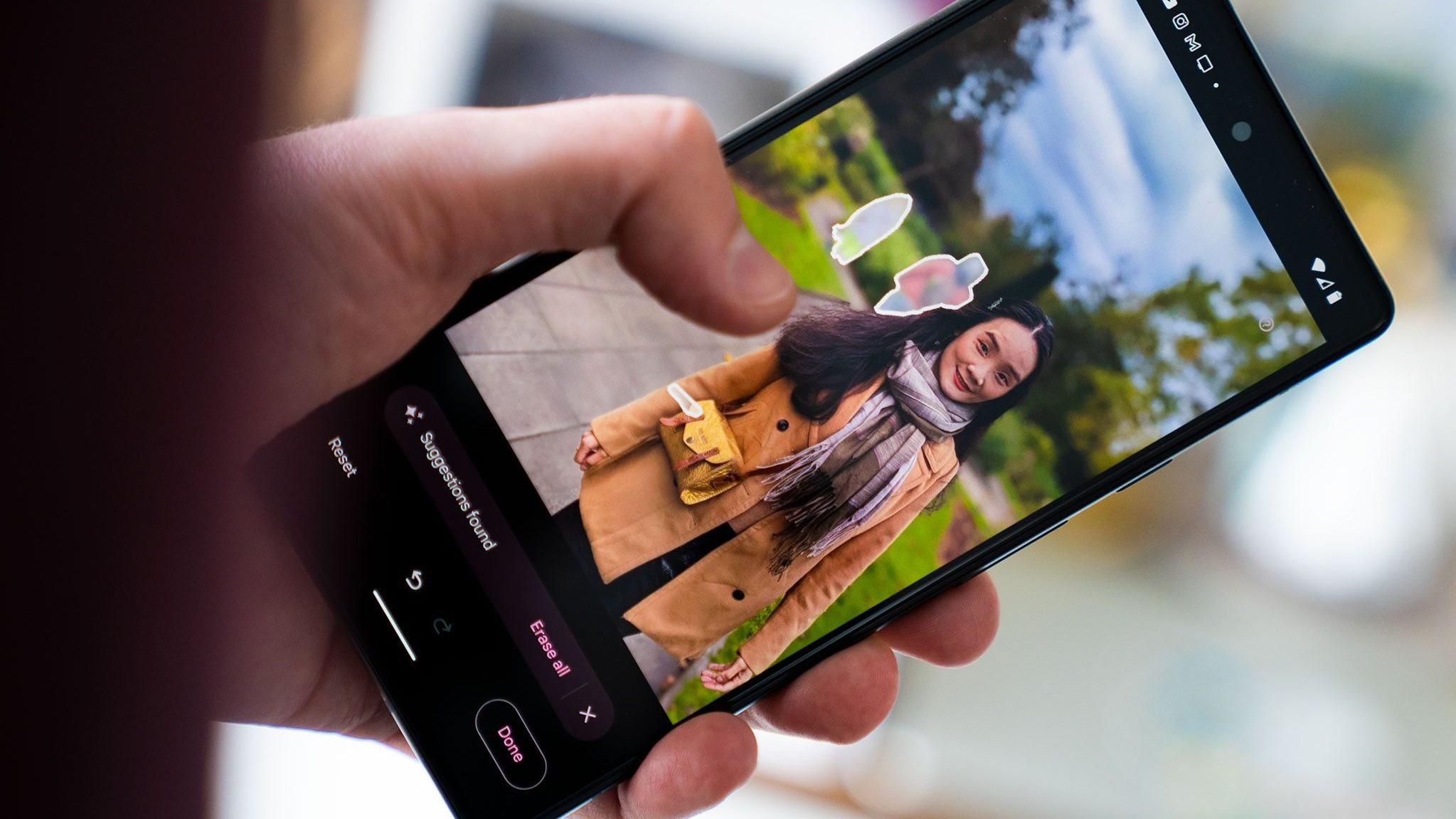
On the software front, both the Pixel 8 and Pixel 6 share the same Android 14 software at the moment, and will leap to Android 15 this fall simultaneously. After that, however, the Pixel 6 will only receive security updates until late 2026, with no more OS updates.
The Pixel 8 will receive software and security updates through 2030, as promised by Google. That means it should eventually receive Android 21 if Google holds to its word. Although most people won't actually use the Pixel 8 for that long, it should give the phone better resale value when you trade it in for your next smartphone.
You can also assume that any future tricks involving Google's Gemini AI will work much better on the Pixel 8, thanks to its enhanced NPU power. That could include, for example, live translation or image generation.
Lastly, we'll point out that the Pixel 6 had notorious issues with connectivity, both in terms of Wi-Fi and 5G cellular data. Thankfully, whatever antenna issues the Pixel 6 had were resolved by the time the Pixel 8 launched: It consistently delivers solid 5G connectivity and data speeds, both in our own tests and according to users in general.
Pixel 8 vs. Pixel 6: Should you upgrade?
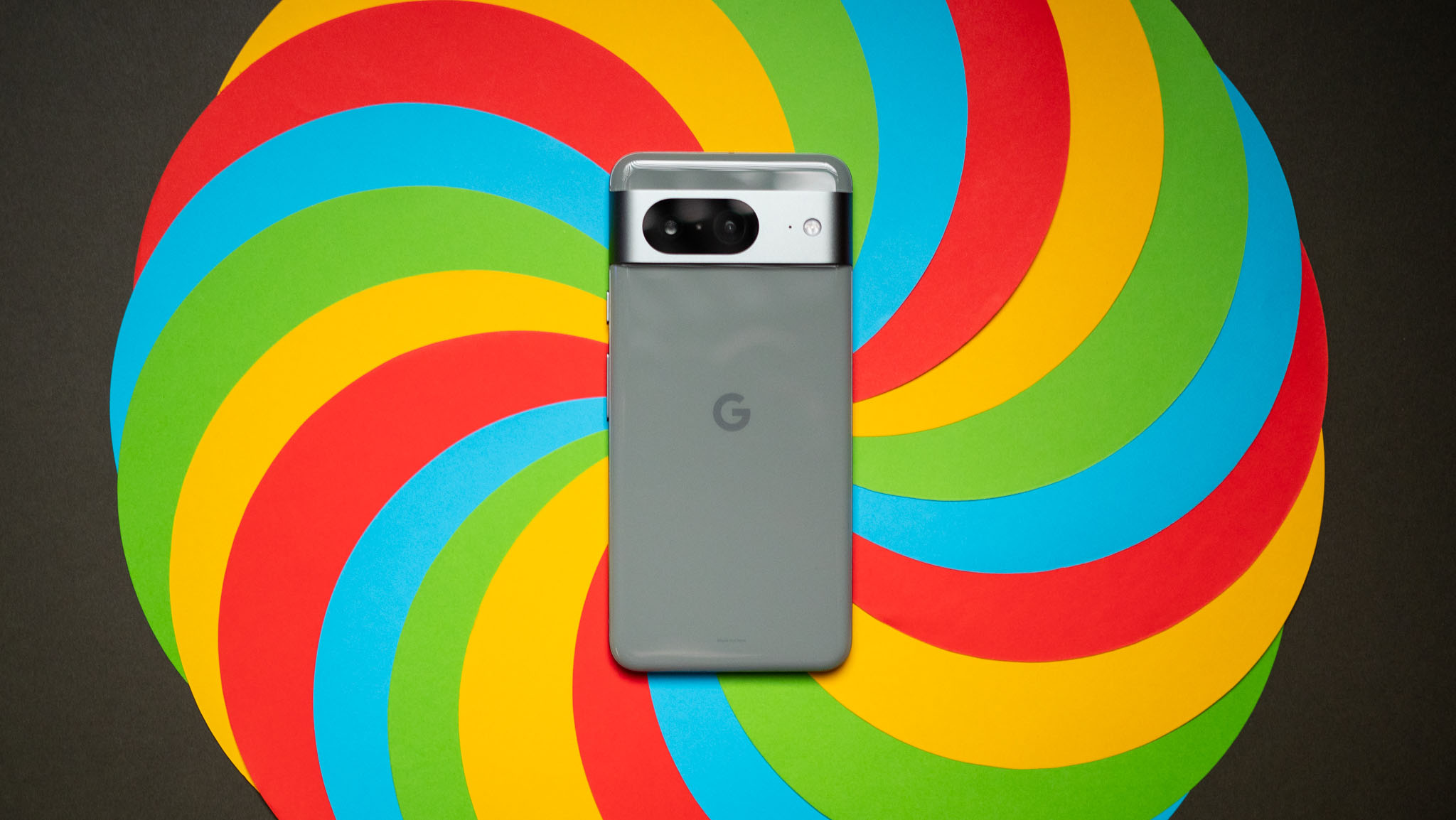
Without a doubt, the Pixel 8 gives you a better phone experience across the board. Its display is brighter, smoother, and more colorful. It gives you two more generations of Google's AI camera tricks and the promise of better Gemini support. It also takes better photos, looks more stylish, weighs 20g less, and isn't plagued by the Pixel 6's connectivity woes.
The only question is whether that's enough for you. So far, the Pixel 9 rumors suggest that we won't see a drastic performance boost, but could see a telephoto lens on a non-Pro Pixel for the first time; perhaps we'll see other long-overdue boosts to charging or storage speed, but we can't count on that.
There's also the unavoidable fact that most recent Pixels have had hardware quality control issues pop up after launch. The list includes volume rockers falling off, USB-C ports coming loose, and the aforementioned satellite problems in the Pixel 6. The Pixel 8 is better than the Pixel 6, but we can't predict what issues will arise.
If you've grown sick of your Pixel 6, then you can buy the Pixel 8 knowing it makes enough significant upgrades to justify the purchase. But you may also want to look into other Android phone brands that have made greater strides in performance, if that matters to you more than the Pixel 8's fantastic cameras. And keep in mind that Google still has something to prove when it comes to its phones' longevity.
A more polished Pixel
Google still has work to do to make its Pixel phones catch up to the pack in some hardware areas, but its software, cameras, and AI tricks continue to lead the industry in many ways. It's certainly a more reliable (and stylish) phone than the Pixel 6.
Running out of time
The Pixel 6 is only 2.5 years old as of publication, but it already feels outdated, with the Pixel 8 expected to last much longer thanks to its seven years of Android OS updates. It walked so that the Pixel 8 could run.







